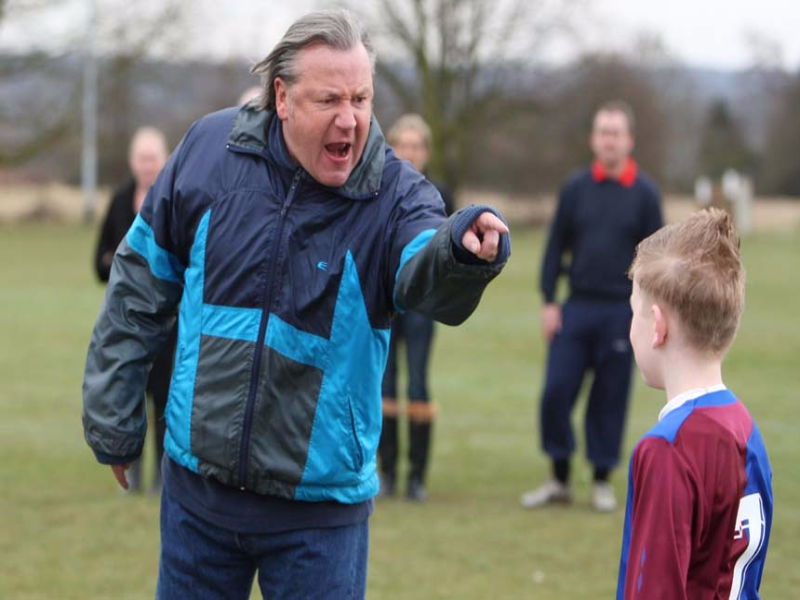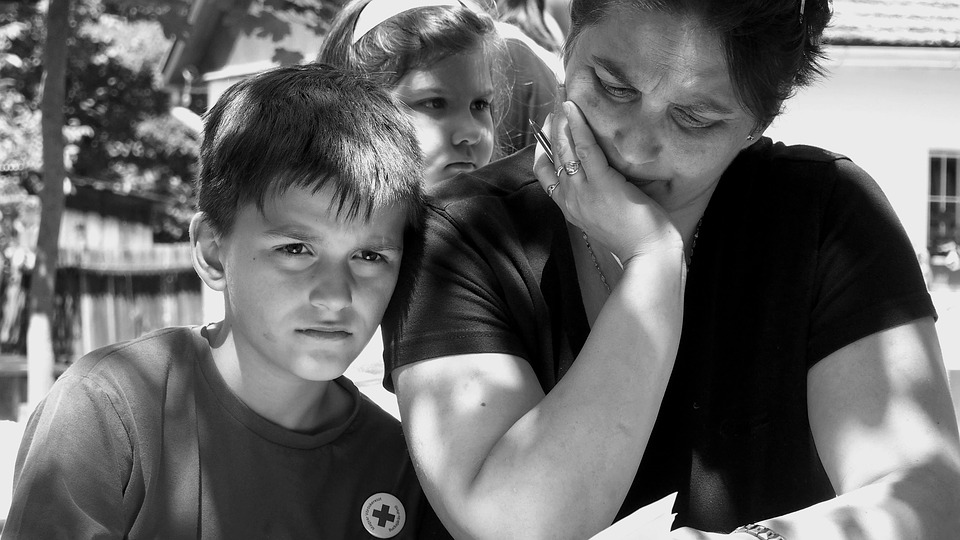Via Psychology Today: When to Push a Child and When Not to
We all want the best for our kids, and these days there is a growing chorus of voices telling us that this means pushing them to work harder. Just about every aspect of a child or teen’s life these days is a competition. But to excel at school, sports, the arts, spelling, debating, social media, even texting (yes, there is a US National Texting Competition), means going that little bit further than others are prepared to go.
And the difficult question – for parents and teachers alike – is knowing when it’s good for a child to be pushed and when it’s not.
Previous generations had a ready answer this question: It’s always good. The assumption was that children need to learn how to persevere if they are going to succeed in life, and no one ever said this was going to be easy. The problem, however, is that we are seeing too many kids these days that are falling by the wayside: struggling with anxiety, poor concentration, or health issues, shying away from challenges, choosing to be endlessly entertained. Is this telling us that they haven’t been pushed hard enough, or that they’ve already been pushed too hard? This is such a difficult question for parents.
With a son who grew up playing small-town hockey, I’ve met my share of hockey parents. So many of them were desperate for their child to play on a premier team. So many disappointed that their child lacked the perseverance shown by the kids who made those teams. And so many who saw their child’s poor performance as due to a lack of effort. So, they set out to push their kids to try harder. And some of them – quite a few of them – got a little carried away.
I’ve seen parents tear a strip out of their child the moment he came off the ice, and sometimes, even while he was still on. I’ve seen parents offer extravagant “rewards” to motivate their child – or for that matter, the coach. I’ve seen parents stuffing their child with candy before tryouts. And I’ve seen far too many talented young players quit the second they were old enough to have a say. But this isn’t about the perils of minor hockey, or any of the other countless areas where this is happening today (everywhere)? This is about reframing perseverance: about why we immediately jump to the conclusion that we’re dealing with is a motivation problem – and the consequences of such a mindset (reframing).
At the end of the day, hockey, like all extracurricular activities, is about a child’s wellbeing in all five of our Self-Reg domains: physical, emotional, cognitive, social, and prosocial. Hard as it is for parents to admit, there are times when the activity is not that good for the child; maybe the reverse. Times when a child’s enjoyment of the game or activity languishes; when other aspects of the child’s life – school, health, social life, mood – begin to suffer.
Don’t get me wrong: I am not questioning the benefits of competition. I love what hockey has done for our son – the way it has instilled self-discipline and self-confidence. And the benefits of being on a team are incalculable. If anything, my question is how we might assist our children to realize – and when needs be, manage – their dreams. But what is far more important is to enjoy the process, and for that matter, the dream itself, should it actually come to pass. And this is where reframing comes in: understanding when perseverance turns into something vastly different, with far from salutary effects.
The difference here is between perseverance and compulsion. In terms of the “Triune Brain” metaphor, perseverance is what is referred to in Self-Reg as “Blue Brain” behaviour. Perseverance is fueled by interest and desire: we press on, despite the unpleasant feelings – fatigue, boredom, discomfort, failure – because we so badly want the goal. The key is: we choose to keep going, despite the difficulties and the setbacks. Compulsion is a Red Brain phenomenon: i.e., behaviour driven by a sub-cortical “expectation of reward.”
For neuroscientists, the latter is a function of three major factors: the positive benefits associated with a “reward” (e.g., a burst of energy, feeling soothed); incentive salience (the size of the anticipated reward); and the positive sensation produced by the “seeking” itself (i.e., by dopamine, which produces a pleasant, “energizing” sensation). In the case of compulsion, we do not choose to keep going: a “limbic prime” forces us to do so, and it dulls our awareness of the costs.
Hunger and thirst are examples of innate limbic primes: they direct behaviour so as to keep homeostatic systems running within a functional range. The processes driving us to obtain the “reward” (e.g., slake our thirst) are regulated by the hypothalamus. Someone crawling in the desert in search of water will keep going until they collapse. A “reward” in this sense is not something that one earns by one’s efforts but rather, something that causes us to keep going.
So many of the limbic primes that drive a child or teen are acquired: induced by parents, peers, educators, coaches, culture, advertisers! But no matter how much we exhort them every child reaches a point where they say: Enough! Some much earlier than others. The kid, for example, who stops skating during practice before all the others, and insists “I don’t care” if rebuked by the coach. All too often, the problem isn’t that the child isn’t motivated enough, but that he has experienced a neural shift from Blue Brain to Red Brain. Such a child isn’t guilty of not trying; his actions are constrained by limbic braking.
Limbic brakes kick in when glucose levels in the bloodstream dip below a certain threshold. In the hockey example, this might happen because of the energy the child has expended trying not to fall, stop, turn, avoid other players, keep the puck on her stick. Maybe there are other aspects of the game that she finds stressful: the fear of appearing foolish; trying to remember the rules; being yelled at by her parents in the stands.
All of these stresses burn energy: that, after all, is the defining feature of “stress.” Just wearing the equipment can be a big stress for some kids. (Think of Richard Branson’s crusade to get men to carry round a pair of scissors to cut off their neckties.) And, of course, the child might not be feeling well that day; or she might have arrived at the game late and already over-stressed; or she’s worried that she’s going to be kicked off the team.
Limbic braking is completely different from laziness or indolence. The latter are Blue Brain phenomena: i.e., the child is fully capable of going further but opts instead to quit. But in the case of limbic braking the hypothalamus – which oversees glucose levels in the bloodstream – sends an order to Cease and Desist. Stop skating! Stop working on the math problem! Stop practicing piano! This is entirely non-conscious: a primitive, sub-cortical mechanism designed to prevent excessive wear and tear. But then, limbic brakes can be over-ridden. The question is: ‘How?’ And more to the point: ‘What is the cost of doing so?’
The only way to override limbic brakes is with a sudden input of energy. This is the reason why, in popular advertising, an exhausted athlete is shown suddenly reviving with a glucose-laden drink. But sans drink in hand, the “energy kick” comes from us. We may try to “up-regulate” the child: i.e., use our own energy to give the child the needed boost. Or maybe we resort to fear or anger; for going into fight-or-flight provides the burst of energy needed to override the limbic brakes, while at the same time muting the PFC systems that subserve self-awareness.
This is the reason why we shout or threaten a child or teen when they want to give up (I’ve done it myself on occasion when my own passions were running a little too high). We do so in the hope that the child will internalize this external “motivation.” But what we are really doing is priming the child’s limbic system: i.e., programming the child to resort to fear or anger on his own to override his limbic brakes.
Children can be trained to override their limbic brakes – or, at least, some of them can, some of the time. There are “energy reserves” that serve this purpose. (Hence the rise in cortisol, which unlocks the energy contained in fat cells.) The effect of overriding limbic brakes is comparable to driving a car when the engine has gone into the red zone. The occasional redlining doesn’t harm a motor. But do this too much or go well past the rev limiter and this can cause damage.
The same is true for pushing children to override their limbic brakes too hard or too often. Do it judiciously and it might help build the child’s “stress tolerance.” Overdoing it, however, has quite a different effect.
The danger here is not only that the parasympathetic nervous system is strained and recovery is compromised, but that the child will come to have strong negative associations with the activity in question. Read through the memoirs of individuals who have succeeded because they were compelled (first by others and then by themselves) and what comes through loud and clear is how much they came to hate the activity in which they ultimately excelled. (The beginning of Andre Agassi’s autobiography, Open, is a striking case in point [Agassi].) This is an aspect of the debate over perseverance that rarely gets mentioned, but it should.
The point here, however, is not that parents are confronted with a difficult decision in regards to their child’s future: viz., success-at-a-cost versus failure-at-a-different-cost. The whole point of reframing perseverance is that it presents us with a very different dichotomy: viz., between compulsion and flow [Flow]. Where compulsion is a Red Brain phenomenon, flow is Blue Brain.
Where compulsion is exhausting, flow is energizing. The former is dogged, the latter creative. The former leaves you shattered and disillusioned, the latter, calm and inspired.
The concept of flow is tied to the concepts of absorption, euphoria, and most important of all, effortlessness. What it is not tied to is success. Both compulsion and flow involve a loss of any sense of space and time; both are tied to a dissociation of sorts. But the motivation for flow comes, not from the lure of status or prestige, but the joy of the experience itself. One does not strive for flow in order to obtain a reward; flow is its own reward. And there is a flow to flow itself, which is where Self-Reg comes in.
The great American biopsychologist Robert Thayer discovered that motivation naturally varies according to one’s energy and tension level [Thayer]). We are most motivated to obtain a goal when our energy is high and tension is low (HE/LT); least motivated when energy is low and tension is high (LE/HT). What this means is that we try harder, for longer, and feel more positive when we’re in HE/LT. In which case, the better we can help children recognize when and why they are slipping into LE/HT, and what they need to do to restore, the better they can return to a flow state.
One of the finer aspects of parenting and teaching is knowing when you’re dealing with a child who needs encouragement and when it’s a case of limbic braking: i.e., a situation in which gentle yet firm support is not going to keep the child going, and pushing too hard is going to send them into Red Brain.
But where Self-Reg is especially important is not just in recognizing limbic braking for what it is, but helping us to recognize the onset of limbic braking before it occurs: e.g., in a child’s voice, eyes, posture, movement. And eventually, helping the child or teen learn how to do the same.
The upshot of this reframing is that we need to distinguish between what we want for kids and what we’re prepared to inflict on them. Or what is worse still, what we seek to prime kids to inflict on themselves. That must never be our goal as parents or educators. Our goal should be that children love hockey at the end of the season as much as at the beginning. Constantly pushing them to override their limbic brakes – because of the antiquated and misguided assumption that this builds character – is the surest way there is to prevent them from experiencing flow in whatever captures their interest and imagination.








